Castile Mountain Project
The Castile Mountain gold prospect is a shallow low sulfidation epithermal target located in the Tuscarora Mountains of north-central Nevada, about 3.5 miles southwest of the productive vein systems at Tuscarora. The property consists of 8 unpatented lode mining claims sitting at the top of Castile Mountain.
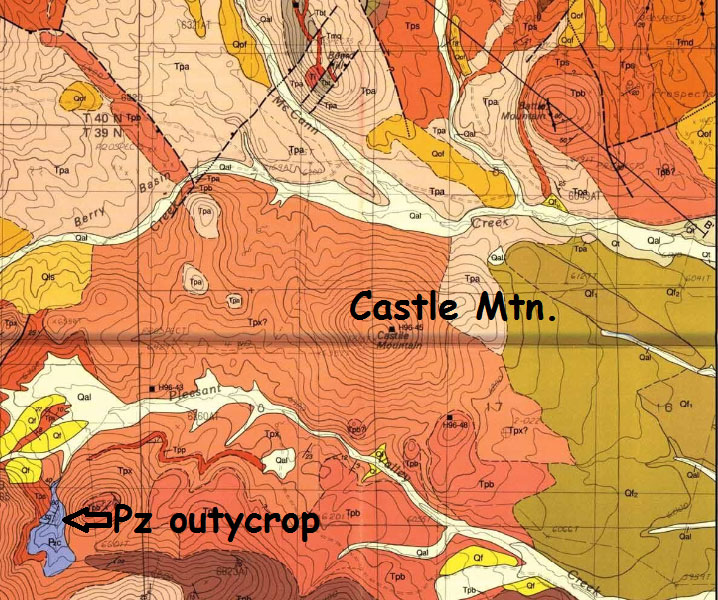
The Rock Creek, Divide Mine, and Castile Mountain properties are all in the Tuscarora Mountains, located NE of the prolific Carlin Trend in Elko County, NV. The properties are in close proximity to major gold deposits on 3 sides, with Midas approximately 35 km to the WSW, Goldstrike approximately 45 km to the S, and Jerritt Canyon approximately 30 km to the East.
Shell Mining drilled 5 shallow test holes in the area in 1984, with one of the holes drilled at the top of Castile Mountain. DH CM-1 encountered a mineralized zone that carried anomalous gold values ranging from 240 ppb to 400 ppb over 35 feet. Three intervals of unknown depths were reported:
20’@0.35 ppm Au
5’@0.4 ppm Au
10’@0.2 ppm Au
The Castle Mountain prospect is a low sulfidation epithermal gold target with strong surface alteration. A paleo hot spring vent crops out at the top of Castle Mountain evidenced by a small area of sinter and silicified volcaniclastic rocks that carry anomalous gold. The surrounding area features strong argillic alteration with minor quartz stock-work veins.
Surface mineralization is hosted dense welded andesite breccia (mapped as debris flow breccia) having a maximum thickness of 170 meters. A lens of Paleozoic debris is interstratified with the andesite breccia. Below that, Tertiary andesite, ash flow tuff and a basal conglomerate sit unconformably on Paleozoic sediments. The estimated depth to the unconformity, based on a NBMG section drawn 2 miles to the southwest, is between 250m and 350m. This unconformity represents an excellent stratigraphic target for mineralization below the hot springs vent.
The Gravel Creek project in northern Elko County is the best analog for Castle Mountain. Gravel Creek is a new gold/silver discovery by Western Exploration. They have intercepts up to 16 meters long at 49 g/t Au, or up to 318 meters at 1.27 g/t Au. Mineralization at Gravel Creek there is hosted in silicified breccia formed at the basement/Miocene interface below a surface sinter and weak geochemical anomalies (Christensen, 2015). The host rocks at Castle Mountain are of similar age and lithology.
To date, thirty-four chip and grab samples have been collected from silicified volcanic rocks and paleo sinter outcrops and subcrops across the property
- Of the thirty-four samples collected, seventeen samples yielded gold values greater than 0.1 g/t, with three samples containing more than 0.5 g/t (1.085 g/t; 0.633 g/t; and 0.52 g/t Au)
- The samples also contained strong anomalies in pathfinder elements, including As values up to 2170 ppm and Ba values up to 650 ppm
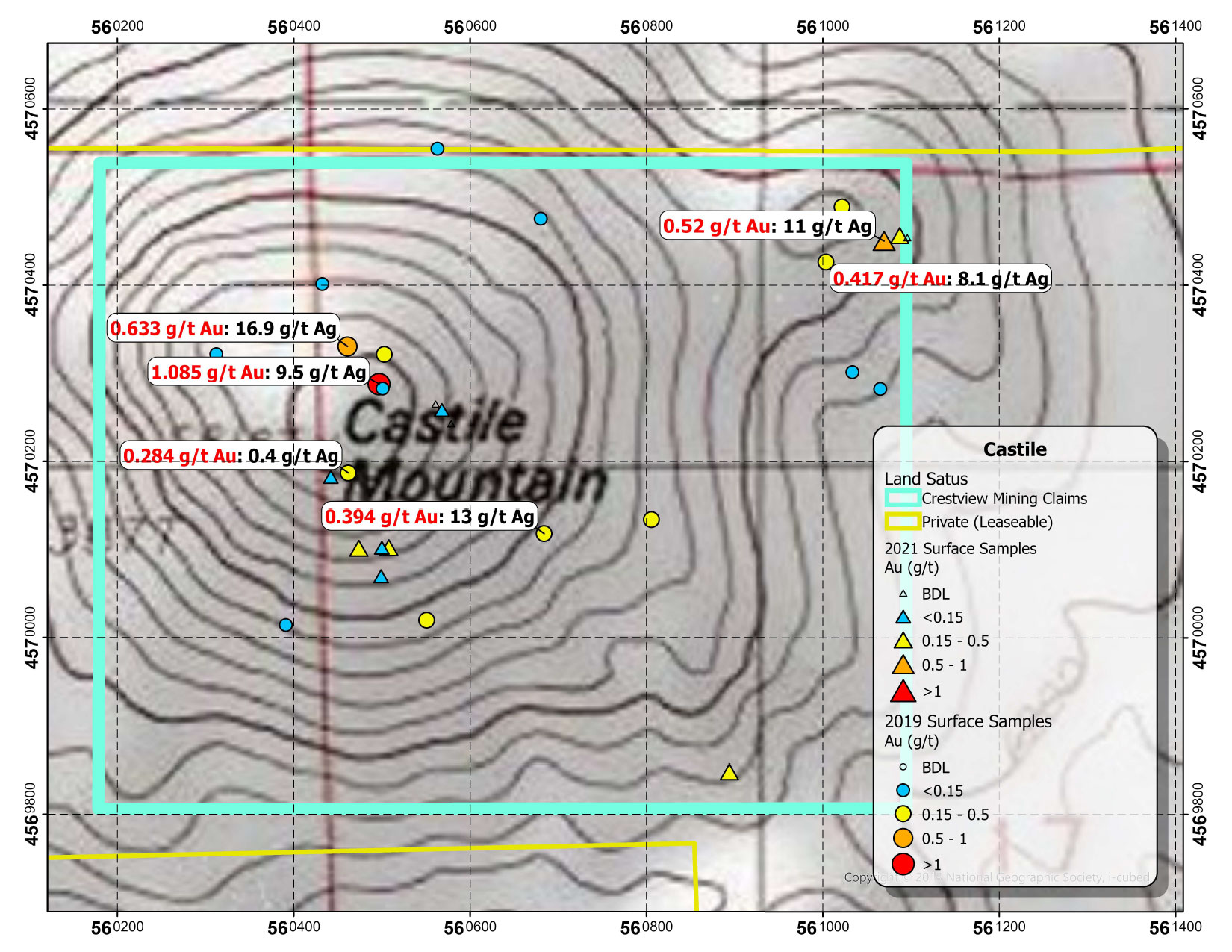
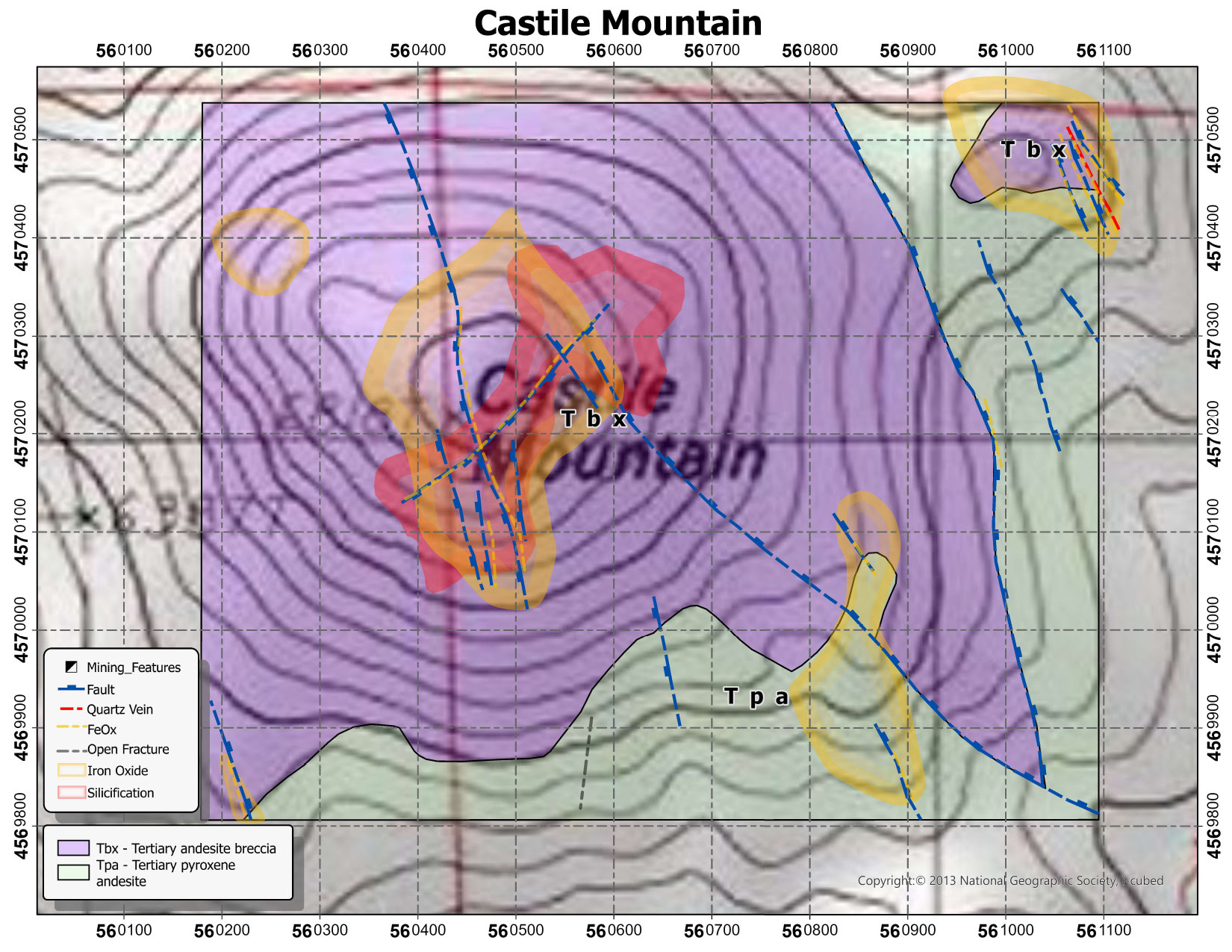
The geologic mapping conducted at Castile indicates that drilling, both shallow and deep, is warranted to pin down structural intersection zones and the unconformable contact between the Tertiary volcanic rocks with the Paleozoic basement.
Tertiary volcanic rocks at Castile Mountain are represented by andesite breccias (Tpx) and minor andesite lavas (Tpa). Paleozoic siliciclastic rocks are exposed about 3 kilometers SW of Castile.
- Interpretative Map of Alteration
- Interpretative Map ofLimonites & Fractures & Trend Analysis
- Interpretative Map of Lithology & Structures
- Tuscarora Regional Map
- Tuscarora Local Map

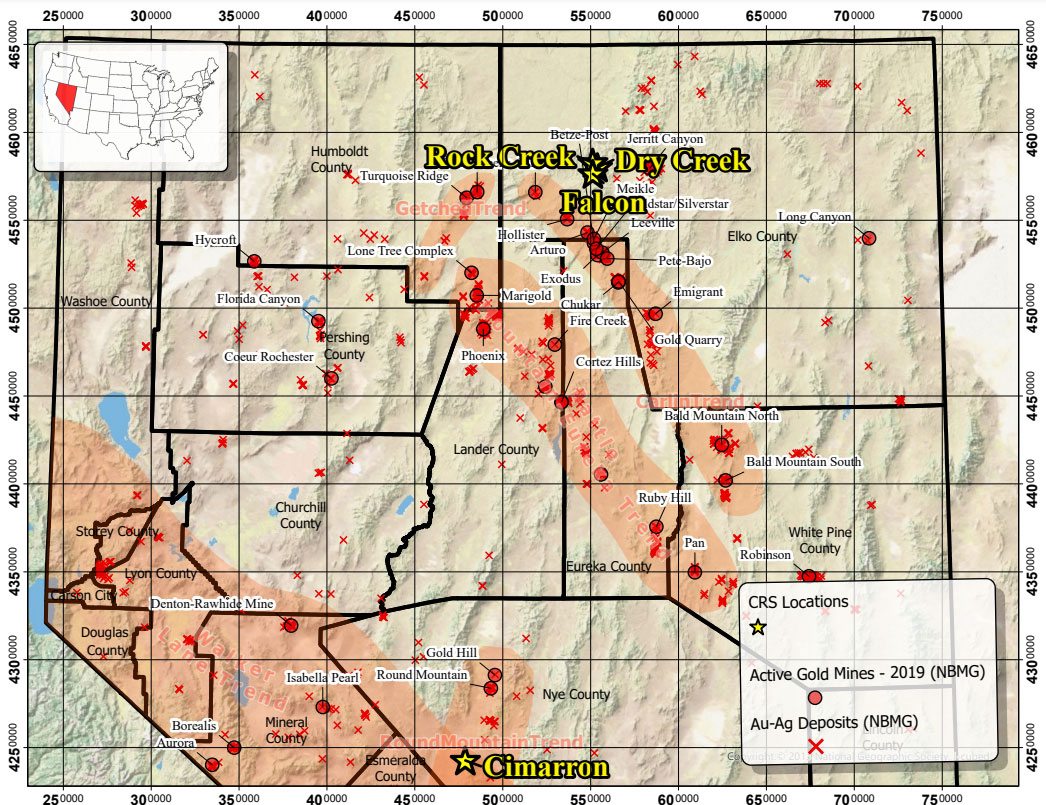
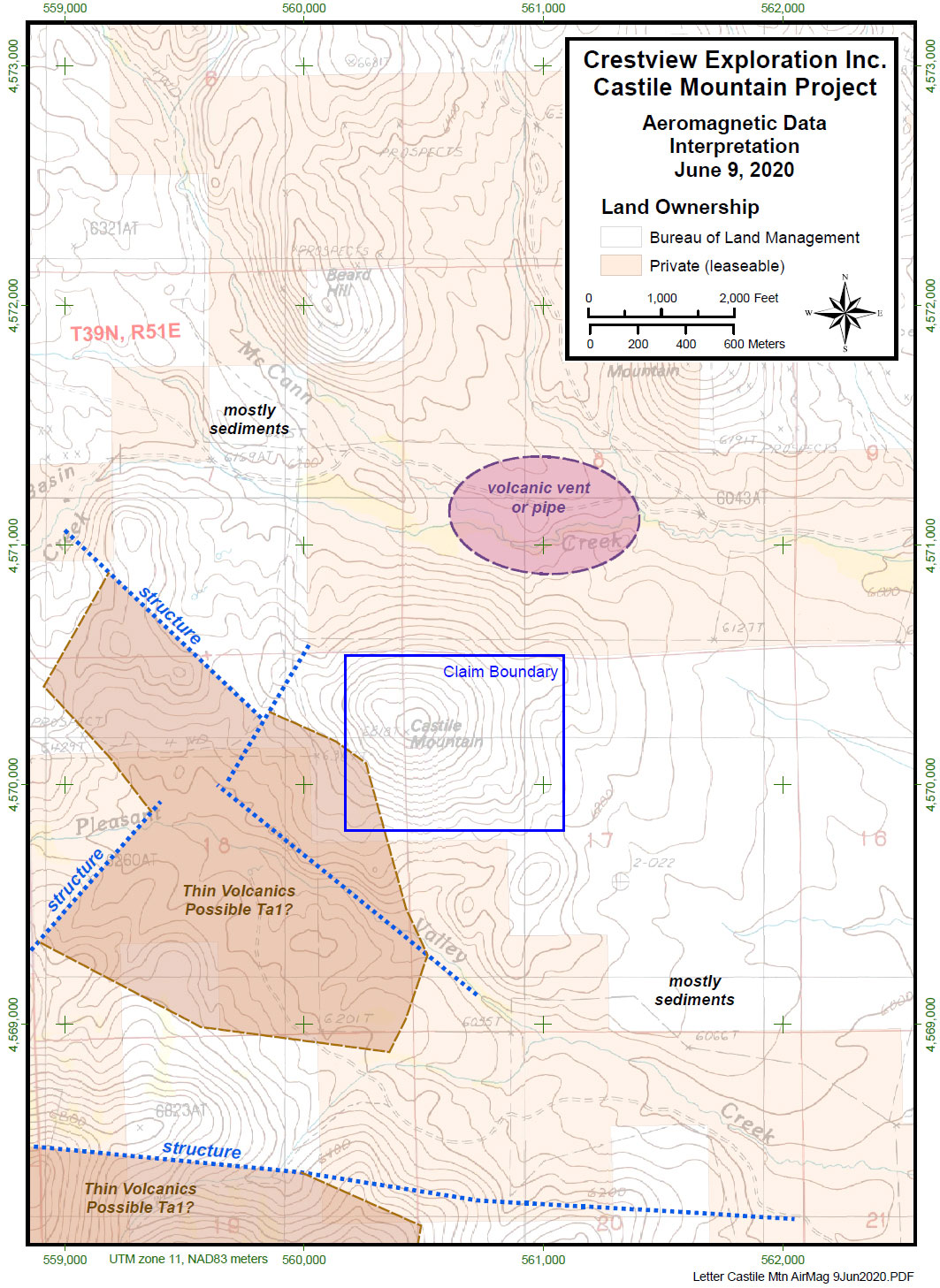
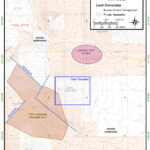

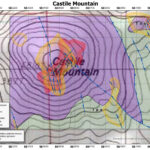
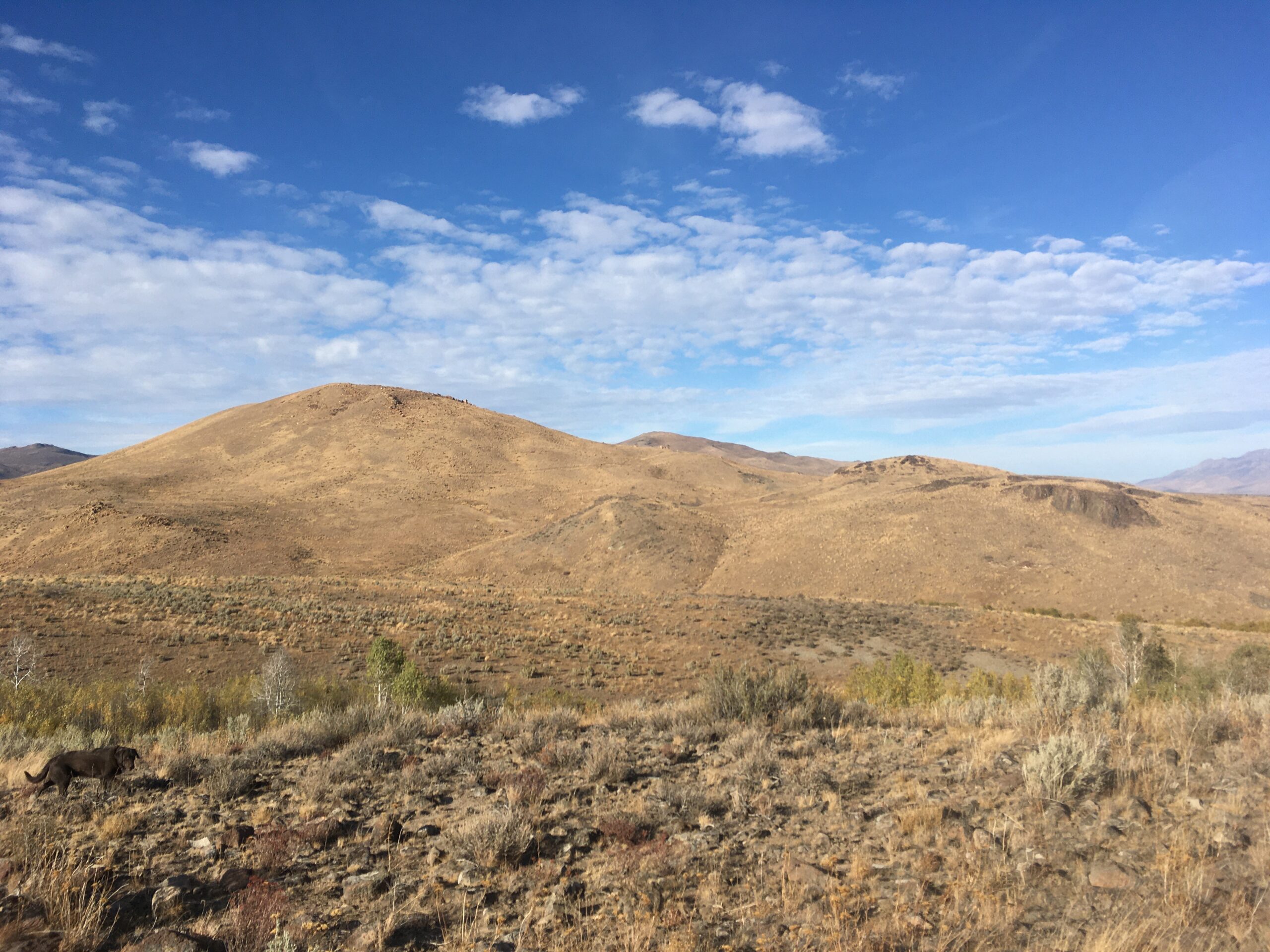

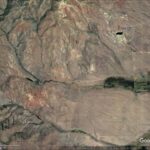
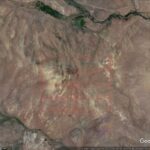

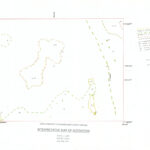
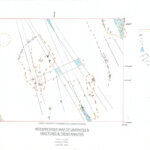
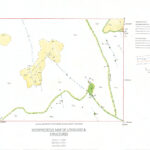
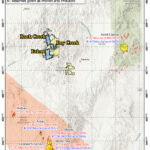

Stay In Touch